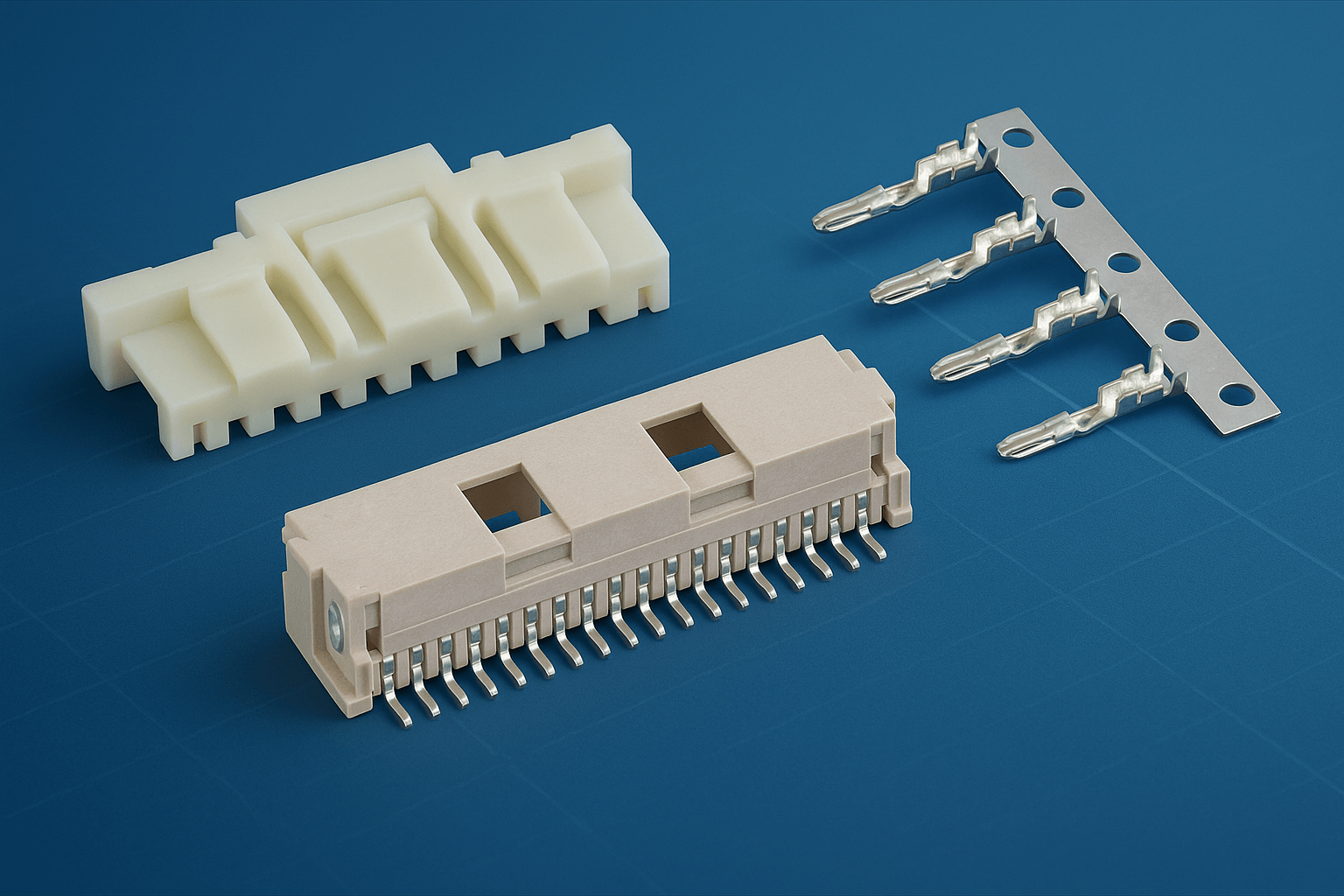Exploring Wafer Connector Design: Core Structure and Key Features
Wafer connectors play a crucial role in modern electronic devices, offering a reliable and efficient circuit connection. Their unique structural design and functional advantages make them an ideal choice for various applications. This article provides a detailed overview of the structure and characteristics of wafer connectors.

I. Basic Structure
A wafer connector typically consists of three main components: the header (pins), crimp terminals, and housing.
- Header (Pins): This is the male end of the connector, composed of a series of metal pins fixed within a plastic housing. The header is usually soldered onto a PCB, providing a stable electrical connection point.
- Crimp Terminals: These are the female terminals designed for wire crimping. Made of metal with flexible contact points, they securely grip the conductor of the wire, ensuring a strong electrical connection.
- Housing: This is the plastic shell that holds and protects the internal metal contacts. The housing also provides insulation to prevent electrical short circuits.
II. Structural Features
Wafer connectors are designed with several key characteristics:
- Flat Design: Their slim and compact form factor makes them ideal for space-constrained applications such as smartphones and tablets.
- High-Density Pin Layout: The connectors feature a high pin density, enabling multiple connection points within a limited space for efficient circuit integration.
- Wire-to-Board Connection: One end (male) is soldered onto a PCB, while the other end (female) is crimped onto wires, eliminating the need for soldering and simplifying the assembly process.
- Polarized Design: Some wafer connectors include polarity markings to prevent incorrect mating and ensure reliable connections.
- Compatibility: Wafer connectors are compatible with pin headers, making them easy to pair and cost-effective.
III. Application Fields
Wafer connectors are widely used across multiple industries, including consumer electronics, automotive electronics, industrial control, and medical equipment. Their compact size, high-density wiring capability, high-speed signal transmission, and reliability make them an essential component in modern electronics.
With their unique structural design and functional advantages, wafer connectors continue to play a vital role in electronic devices. As technology advances, their design and performance are continuously evolving to meet changing market demands.



